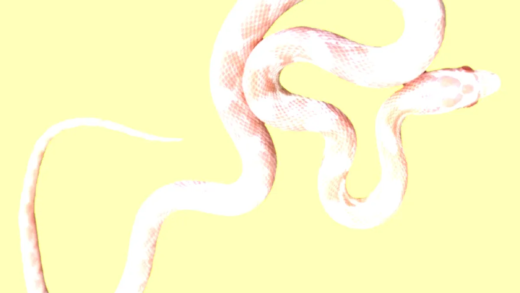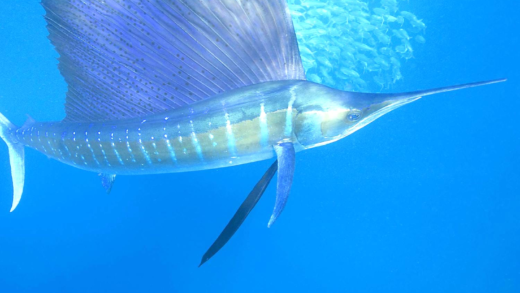Dwarf Sucking Catfish are small, peaceful fish ideal for community tanks. They require specific care, including proper tank size, water quality, and diet. These fish exhibit social behaviors and thrive in groups, often grazing on algae. They reach about 2 inches in size and prefer slightly acidic water conditions. Maintaining stable water parameters is crucial for their health and well-being.
Dwarf Sucking Catfish Overview: What You Need to Know
Dwarf Sucking Catfish are small, fascinating creatures popular among aquarium enthusiasts. Known scientifically as Otocinclus, these catfish are often referred to as Otos or Otocinclus Catfish. They originate from freshwater habitats in South America, particularly from rivers and streams in Brazil and Paraguay. Their small size and peaceful nature make them ideal for community tanks.
These fish typically grow to about 2 inches (5 cm) in length. They have a distinctive body shape, characterized by a flat underside and a rounded back. Their coloration varies from brown to green, often featuring light spots or stripes, which help them blend into their natural environments. Understanding these traits is essential for any aquarist looking to introduce Dwarf Sucking Catfish into their setup.
Physical Characteristics of Dwarf Sucking Catfish: Size and Appearance
Dwarf Sucking Catfish are easily recognizable due to their unique physical features. They have a streamlined body designed for gliding through water, and their mouths are equipped with a specialized sucking disc. This adaptation allows them to cling to surfaces and consume algae effectively.
In terms of size, adult Dwarf Sucking Catfish reach a maximum length of around 2 inches (5 cm). Their small stature makes them suitable for nano tanks, where they can thrive without overwhelming the space. The coloration of these fish varies, ranging from light brown to olive green, with subtle patterns that provide camouflage against natural substrates.
- Body Shape: Streamlined with a flat underside.
- Mouth: Specialized sucking disc for algae feeding.
- Size: Generally reaches 2 inches (5 cm).
- Coloration: Brown to green with patterns for camouflage.
Natural Habitat: Where Do Dwarf Sucking Catfish Live?
Dwarf Sucking Catfish thrive in specific natural habitats that mimic their preferred environment. They are commonly found in slow-moving rivers and streams, where they inhabit areas with dense vegetation and plenty of hiding spots. These habitats offer both food sources, such as algae, and protection from predators.
In the wild, the water conditions are typically warm and slightly acidic, with a pH range of 6.0 to 7.5. The presence of driftwood, rocks, and plants is crucial as it provides shelter and helps maintain water quality. Understanding these natural settings is vital for recreating a suitable environment in captivity.
- Preferred Environment: Slow-moving rivers and streams.
- Key Features: Dense vegetation and hiding spots.
- Water Conditions: Warm, slightly acidic with a pH of 6.0 to 7.5.
- Habitat Components: Driftwood, rocks, and plants for shelter.
Algae Control: The Dwarf Sucking Catfish’s Role in Your Aquarium
Dwarf Sucking Catfish are not just charming additions to your aquarium; they also play a crucial role in algae control. These fish are natural grazers, effectively consuming algae that can otherwise overrun a tank, leading to unsightly green growths. By keeping algae in check, Dwarf Sucking Catfish help maintain a clean and healthy environment for all aquatic inhabitants.
When introducing these fish, it’s important to understand their feeding habits. They prefer soft, green algae, which can be found on various surfaces within the aquarium. Their specialized mouths allow them to suction onto glass, rocks, and plants, making them efficient at cleaning up unwanted algae. Here are some benefits of having Dwarf Sucking Catfish for algae control:
- Natural Cleaners: They consume algae, preventing its excessive growth.
- Peaceful Nature: They coexist well with most fish, making them ideal for community tanks.
- Low Maintenance: Once acclimated, they require minimal care beyond providing proper water conditions.
In summary, Dwarf Sucking Catfish are effective algae controllers that enhance the health of your aquarium. Their grazing habits not only help reduce algae but also contribute to a balanced ecosystem. By keeping your tank clean, they allow other fish and plants to thrive.
Diet of Dwarf Sucking Catfish: What Do They Eat?
The Dwarf Sucking Catfish has specific dietary needs that every aquarist should be aware of. These fish primarily feed on algae, but they also benefit from a varied diet to ensure they receive all necessary nutrients. In the wild, they graze on soft algae and biofilm found on rocks and plants. In captivity, it’s essential to replicate this diet as closely as possible.
Here are some suitable food options for Dwarf Sucking Catfish:
- Algae Wafers: These are specially formulated to meet the nutritional needs of herbivorous fish.
- Spirulina Flakes: Rich in vitamins, spirulina provides essential nutrients and is highly palatable.
- Fresh Vegetables: Blanched zucchini, spinach, or cucumber can be offered occasionally for variety.
It’s important to avoid overfeeding, as excess food can pollute the water. A good rule of thumb is to provide only what they can consume in a few hours. By ensuring a balanced diet, you promote the health and longevity of your Dwarf Sucking Catfish.
Compatibility with Other Fish: Can They Coexist?
Dwarf Sucking Catfish are generally peaceful and can coexist with a variety of fish species in a community tank. Their friendly nature makes them ideal companions for many other small fish. However, understanding compatibility is crucial to ensure a harmonious aquarium environment.
Here are some compatible fish species:
- Tetras: These small schooling fish are friendly and thrive in similar water conditions.
- Guppies: Colorful and lively, guppies make great tank mates for Dwarf Sucking Catfish.
- Rasboras: Another peaceful option, rasboras share similar habitat requirements.
While Dwarf Sucking Catfish are generally non-aggressive, it’s important to avoid pairing them with larger or aggressive fish that may view them as food. By carefully selecting tank mates, you can create a thriving community aquarium that benefits all species involved.
Caring for Your Dwarf Sucking Catfish: Tips for a Healthy Aquarium
Dwarf Sucking Catfish require specific care to thrive in a home aquarium. To ensure their well-being, consider the following tips:
- Tank Size: A minimum of 10 gallons is recommended. This provides ample space for swimming and hiding.
- Water Quality: Regular water changes of 10-15% weekly help maintain clean conditions. Use a quality water conditioner to remove harmful chemicals.
- Temperature: Keep the water temperature between 72°F to 78°F (22°C to 26°C). This range mimics their natural habitat.
- Filtration: A gentle filter is essential, as strong currents can stress these small fish. A sponge filter is a great option for minimal water disturbance.
- Diet: Provide a balanced diet with algae wafers, spirulina flakes, and occasional fresh vegetables to keep them healthy.
Monitoring their health is crucial. Look for signs of stress or illness, such as lethargy or changes in appetite. Maintaining a stable environment will help your Dwarf Sucking Catfish thrive.
Common Behaviors: What to Expect from Your Dwarf Sucking Catfish
Dwarf Sucking Catfish exhibit interesting behaviors that can be quite entertaining. Here are some common traits:
- Grazing: They spend much of their time grazing on algae and biofilm, often sticking to surfaces like rocks and plants.
- Social Interaction: These fish are social and prefer to be in groups. Keeping them in groups of three or more can reduce stress and enhance their natural behaviors.
- Hiding: Dwarf Sucking Catfish enjoy hiding among plants and decorations. Providing plenty of hiding spots will make them feel secure.
- Active during the Day: Unlike some nocturnal species, these fish are primarily active during daylight hours, making them a delight to observe.
Understanding their behaviors can help you create a more suitable environment, ensuring a happy and healthy aquarium for your Dwarf Sucking Catfish.
Size Matters: How Big Do Dwarf Sucking Catfish Get?
Dwarf Sucking Catfish are small fish, reaching a maximum size of about 2 inches (5 cm). This compact size makes them ideal for smaller aquariums or nano tanks. Their small stature allows them to fit into tight spaces, which is important since they often seek shelter among plants and decorations.
Despite their size, Dwarf Sucking Catfish are active swimmers and need adequate space to explore. Keeping them in groups can also promote their natural behavior, as they feel more secure in numbers. Understanding their growth potential is key to providing an appropriate habitat.
Ideal Water Conditions: What Do They Need to Thrive?
For optimal health, Dwarf Sucking Catfish need specific water conditions. Here are the key parameters to maintain:
- pH Level: Aim for a slightly acidic to neutral pH range of 6.0 to 7.5.
- Temperature: Maintain water temperatures between 72°F to 78°F (22°C to 26°C).
- Hardness: Soft to moderately hard water is best, ideally between 2-15 dGH.
- Filtration: A good filter is necessary to keep the water clean while avoiding strong currents.
Regular testing of water parameters is essential to ensure a stable environment. Sudden changes in conditions can stress Dwarf Sucking Catfish, leading to health issues. Keeping these parameters in check is vital for their longevity and happiness.





Comments are closed.